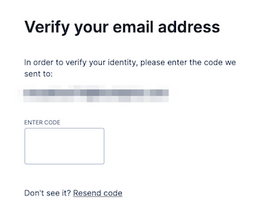How to Perform Email Validation in PHP
In web development, email validation plays a critical role in maintaining data quality, ensuring effective communication, and preventing spam. If you’re building a website, understanding how to properly validate email addresses is essential for both user experience and security. In this guide, we’ll cover everything you need to know about performing email validation in PHP — from the basics to advanced techniques.
Why Email Validation Matters
Email validation is crucial because it helps to ensure that users provide accurate and complete email addresses. This accuracy is vital for any application or website that relies on email communication, such as registration forms, contact forms, newsletters, and e-commerce platforms.
Here’s why email validation is a must:
- Improves Data Quality: By verifying emails, you avoid storing incorrect or incomplete email addresses in your database.
- Ensures Communication: Email validation ensures that you can reach your users through email, making it possible to send them important information.
- Reduces Spam and Fake Accounts: A validation process can deter spambots or malicious actors from submitting fake accounts.
Types of Email Validation in PHP
In PHP, there are multiple ways to validate email addresses. Let’s go through some commonly used methods.
1. Basic Syntax Validation with filter_var()
PHP’s built-in filter_var() function is a straightforward method to validate the syntax of an email address. It checks if the email follows the correct format (e.g., [email protected]). Here’s how you can use it:
This method is widely used because it’s simple and reliable for most basic cases.
2. Regular Expression (Regex) Validation
Regular expressions can offer more control over the validation process. Here’s a simple example:
Regular expressions allow you to enforce specific requirements, such as domain format or character types. However, they can be complex and may require some tweaking to match all valid email formats.
3. Domain Verification with checkdnsrr()
For applications where accurate email domains are crucial, you may want to verify that the domain exists. The checkdnsrr() function in PHP allows you to check if the email’s domain has valid DNS records, typically a “MX” record, which is used for email routing.
This method provides an additional layer of validation but may add some processing time as it requires a DNS lookup.
Advanced Techniques for Email Validation in PHP
Using PHP Libraries
PHP libraries like SwiftMailer and PHPMailer include built-in functions for email validation. They often offer both syntax checking and SMTP validation, where an email is “pinged” to see if it’s active.
API-Based Email Validation
For high-volume applications, an external API service might be useful for email verification. Services like ZeroBounce, Hunter, and Mailgun offer advanced email validation through APIs. Integrating these services can help you verify email addresses at a deeper level, such as checking for disposable or role-based emails.
Here’s a quick example of using cURL to call an API for email validation:
Combining Validation Techniques for Better Accuracy
By combining multiple validation methods, you can achieve highly accurate results. For example:
- Step 1: Use
filter_var()for initial syntax validation. - Step 2: Validate the domain with
checkdnsrr(). - Step 3: For critical applications, use an API for an additional validation layer.
Common Mistakes to Avoid in Email Validation
Here are some pitfalls to watch out for:
- Over-Validating: Avoid overly restrictive regular expressions, as legitimate emails can come in various forms.
- Ignoring Edge Cases: Be aware of special email formats, such as emails with “+” symbols (
[email protected]). - Failing to Sanitize Input: Always sanitize email input to prevent SQL injection and other security issues.
Practical Example: Building a Simple PHP Email Validation Script
Let’s put it all together with a simple example that uses both syntax and domain validation.
This example function will check for both syntax and domain validity, returning a message based on the results.
Conclusion
Implementing email validation in PHP is essential for creating secure, reliable applications. With PHP’s built-in functions, regular expressions, and even third-party APIs, you can craft an email validation system that meets the needs of your project. Ensuring data accuracy from the start improves your website’s reliability and user experience.
By following the steps outlined in this guide, you’ll be well-equipped to handle email validation effectively, whether you’re working on a simple form or a complex application.





